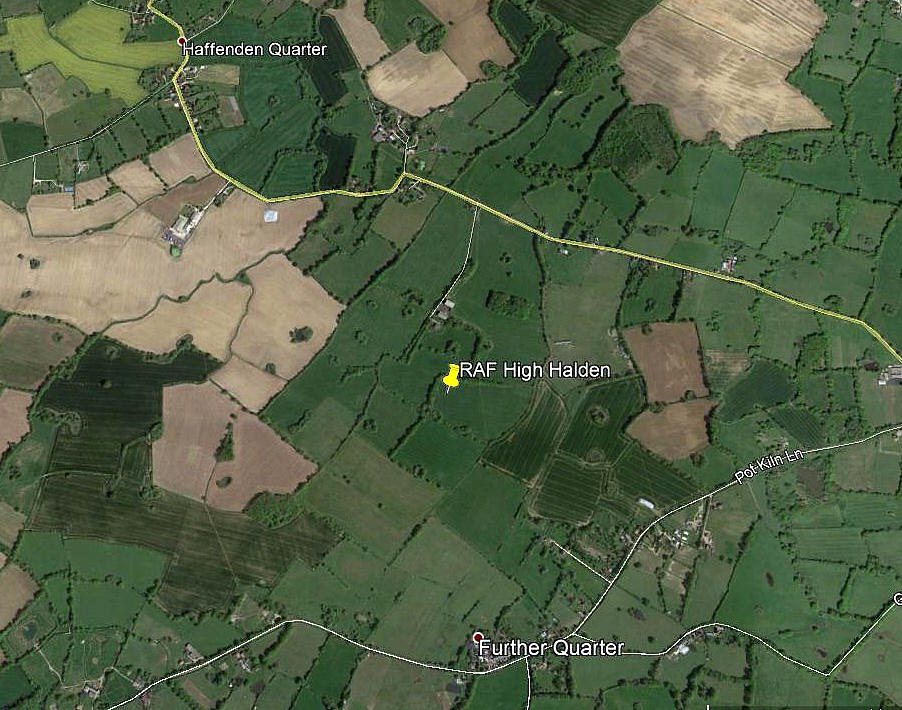High Halden
Note: I believe this was the location for the HIGH HALDEN ALG (Advanced Landing Ground), but I would much welcome confirmation if anybody could be so kind.
HIGH HALDEN: Military temporary airfield
Note: This picture (2018) was obtained from Google Earth ©
Military users: RAF Fighter Command 11 Group ALG
Location: NE of High Haldon, S of Hamden, 6nm WSW of Ashford
Period of operation: 1943 to 1944
Runways: Steel matting 04/22 1646 grass 11/29 1280 grass
NOTES: Not uncommon with RAF ALGs, which were mostly created to support the D-Day invasion, the accommodation is listed as being a Tented Camp.
Derek Collyer in his book East Kent At War states that PSP (Perforated Steel Plank) was, “….laid at hard standings…to counter the jet blast from Meteors of 616 Sqdn. Both here and at MANSTON, their main base."
Generally speaking steel matting was laid in WW2 to counter ‘soft’ surfaces at grass airfield runways especially after periods of heavy rain. This is the first example I have found of somebody claiming it was also laid down to counter the effects of jet efflux at hard standings. Was this the only example perhaps? The early jets, including the DH Comet airliner, were certainly designed to operate from grass runways.
We'd love to hear from you, so please scroll down to leave a comment!
Leave a comment ...
Copyright (c) UK Airfield Guide
















